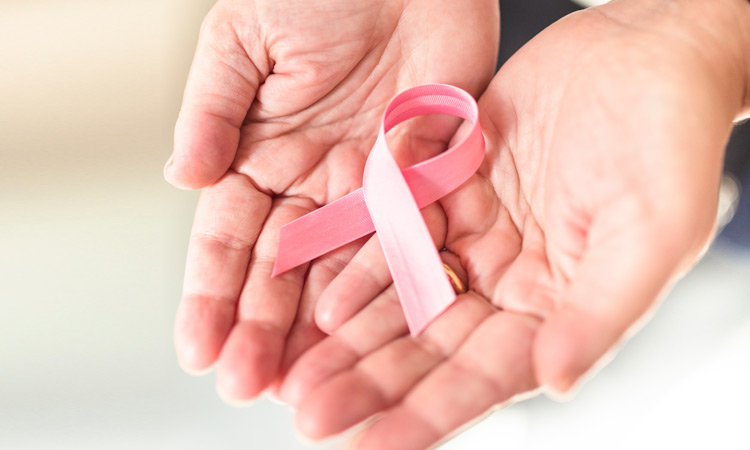 With one in every eight women getting diagnosed with breast cancer in their lifetimes, it is the most common form of the disease for women in the United States behind skin cancer. In 2015 alone, the American Cancer Society is projecting that more than 330,000 women will battle cancer, and more than 40,000 of those will lose their fight. It may come as a surprise, but one in 1,000 men are also at risk of getting breast cancer.
With one in every eight women getting diagnosed with breast cancer in their lifetimes, it is the most common form of the disease for women in the United States behind skin cancer. In 2015 alone, the American Cancer Society is projecting that more than 330,000 women will battle cancer, and more than 40,000 of those will lose their fight. It may come as a surprise, but one in 1,000 men are also at risk of getting breast cancer.
According to Dr Rachel Rabinovitch, investigator at the CU Cancer Center and professor of Radiation Oncology at the University of Colorado School of Medicine, “We know very little about male breast cancer since it comprises only 0.6% of all breast cancer, and nearly all therapy is based on female breast cancer studies.” As with women, breast cancer in men happens when a malignant tumor forms from cells found within breast tissue. The tumor grows and spreads throughout the body and within the breast tissue surrounding the pectoral muscle in the chest.
There are three basic types of breast cancer for men. Ductal carcinoma in situ is a non-invasive, precancerous growth that makes up more than 10% of breast cancer occurrences in men and is nearly always curable by surgical extraction. Invasive ductal carcinoma usually starts close to the nipple and accounts for 80% of breast cancer diagnoses for men. It is quick to spread through the bloodstream and lymphatic system. Invasive lobular carcinoma accounts for only 2% of cancers found in men. It starts in breast tissue that is responsible for producing milk, of which men have very little.
Dr Julie Sharp, head of health information at Cancer Research UK, stated: “Breast cancer in men isn’t discussed very often, so a diagnosis can be a big shock for the small group of men who develop the disease.” Because men are the last to visit their doctors for most health issues, especially something that is most commonly associated with women, they usually don’t receive any care until it is too late.
While most of the symptoms that men encounter are similar or exactly the same as what their female counterparts experience, it is important to know the warning signs. Typically, the most common sign of breast cancer is a lump in the breast tissue and soreness in the armpits. Most men don’t pick up on this because they aren’t conditioned to check. More severe symptoms may follow in the form of discoloration of the skin around the nipple, a reddish, pitted, orange-peel-like texture to the skin and bloody discharge.
Men over 35 tend to be at the greatest risk of contracting breast cancer, and that risk grows as they age—especially between the ages of 60 and 70. Other things to look for that can impact on your chances of getting breast cancer include being exposed to radiation in the chest area, taking hormone treatments, having liver disease or a testicular injury. According to research conducted by the University of Oxford by Professor Tim Key: “We’ve shown for the first time that just like some forms of the cancer in women, estrogen has a big role to play in male breast cancer.”
As you would expect, the treatments for breast cancer in men are almost identical to those that women undergo. Screening with a mammography and subsequent biopsies for any suspect lumps is usually followed by surgery and a combination of chemotherapy and radiation. Hormone therapy thereafter is actually most effective in men as male breast cancer sufferers have hormone receptors, thus making hormone therapy almost 90% effective in treating the disease after surgery. This is especially ironic as research in the Journal of Clinical Oncology just discovered that men with higher levels of estrogen naturally have the highest chances of contracting breast cancer.
One of the most invasive surgical treatments that both men and women face when they are diagnosed with breast cancer is a mastectomy, which is a complete removal of the affected breast. Research published in the International Journal of Radiation Oncology, Biology and Physics discovered that this procedure is more common in men than women, but that trend may change. “Traditionally, breast conservation is not even considered for men with breast cancer. But in a world in which a man’s appearance is increasingly important, and where it is common for men to be seen without a shirt in the gym or on the beach, mastectomy can have overlooked psycho-sexual impacts on men, just as in women,” according to study author Dr Rachel Rabinovitch.
If you think you may have any of the symptoms mentioned in this story, you should visit your doctor immediately and schedule an examination. While breast cancer in men can be very rare, it is hard to beat when it has advanced beyond the breast tissue whereas easiest to overcome when caught early. Don’t risk your health by putting off your doctor visit.
Click here to find out about Rose’s thoughts on wellbeing and health


